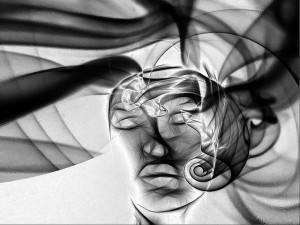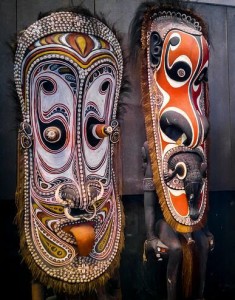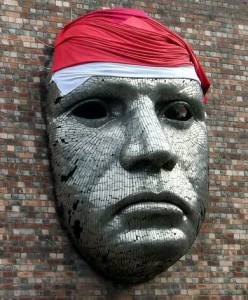
Masks have been used in many cultures and throughout history for protection, theatre, disguise. This is about soldiers creating art – masks – to help understand their trauma and brain injury.
I do not quite know how to describe the moment I opened the envelope and saw “Healing Soldiers” the cover of the February 2015 National Geographic magazine.
It was a moment that stopped me, taking my breath away. A posed photograph of a USA Marine Gunnery Sergeant in full uniform: standing, holding a mask he had created after his own trauma and brain injury.
A powerful article on using creativity, art, and the impact it is having on trauma and brain injury in soldiers.
It is powerful, positive, touching, sad, creative … I could go on.
I encourage you to explore the article for yourself:
[button link=”http://www.nationalgeographic.com/healing-soldiers/index.html” size=”large” style=”info” color=”silver” window=”yes”]Behind the Mask: Revealing the Trauma of War[/button]
Creating Masks – More About Soldiers With Trauma and Brain Injury
How Art Heals the Wounds of War describes the program in more detail. A brief description of how the process begins : “Service members are given a blank mask made of papier-mâché and plastic to decorate. The masks they make reveal things beyond the reach of the most high-tech neuro-imaging machine. They show the psychology of pain.”
This program has been undertaken by The National Intrepid Center of Excellence (NICoE) in Maryland, USA. Their mission is “…to be a leader in advancing traumatic brain injury (TBI) and psychological health (PH) treatment, research and education.”
The Invisible War on the Brain explains more about blast injuries and the impact on the brain.
“Give a man a mask and he will show his true face”
A coincidence occurred as I sat contemplating this article, my son posted a quote on Facebook that seemed so fitting:
“Give a man a mask and he will show his true face” – Oscar Wilde.
After discovering it was not an original of my son’s, I tried to find the reference. Instead I discovered another similar quote also attributed to Oscar Wilde. Both resonate when thinking about this article.
If any of you are Oscar Wilde appreciators and are aware of the actual source of the quote / s please share in the Comments below.
“A mask tells us more than a face.” – Oscar Wilde.
This seems to link strongly with what creating a mask means for soldiers living with trauma and brain injury. The mask tells much about the creator of the mask.

The Potential Benefits of Art and Creativity: Creating A Mask After Trauma and Brain Injury
Creating the mask can provide a starting point for talking. Enabling a focus on interpreting the mask, rather than talking directly about self.
Participant Staff Sgt. Perry Hopman described his thinking at the outset: “I wanted no part of it because, number one, I’m a man, and I don’t like holding a dainty little paintbrush. Number two, I’m not an artist. And number three, I’m not in kindergarten…” Yet found it enabled him to open up in a way he had not previously been able to.
When direct expression is difficult symbols can provide way of expressing hidden pain and hurt.
Creating the mask “puts a face to pain” – literally.
Benefits of art and creativity – the act of creating the mask itself can be helpful in promoting creativity.
“The process of creating the artwork is soothing and therapeutic. They’re able to slow their minds down and focus.”
It can provide a way to begin to have conversations with family and friends about experiences and what seems unspeakable.
Tackling this new medium can provide a sense of challenge and accomplishment.
What did else did you discover in this article? Please share your thoughts and experiences in the Comments below:
All images gratefully sourced from various photographers at www.pixabay.com.
